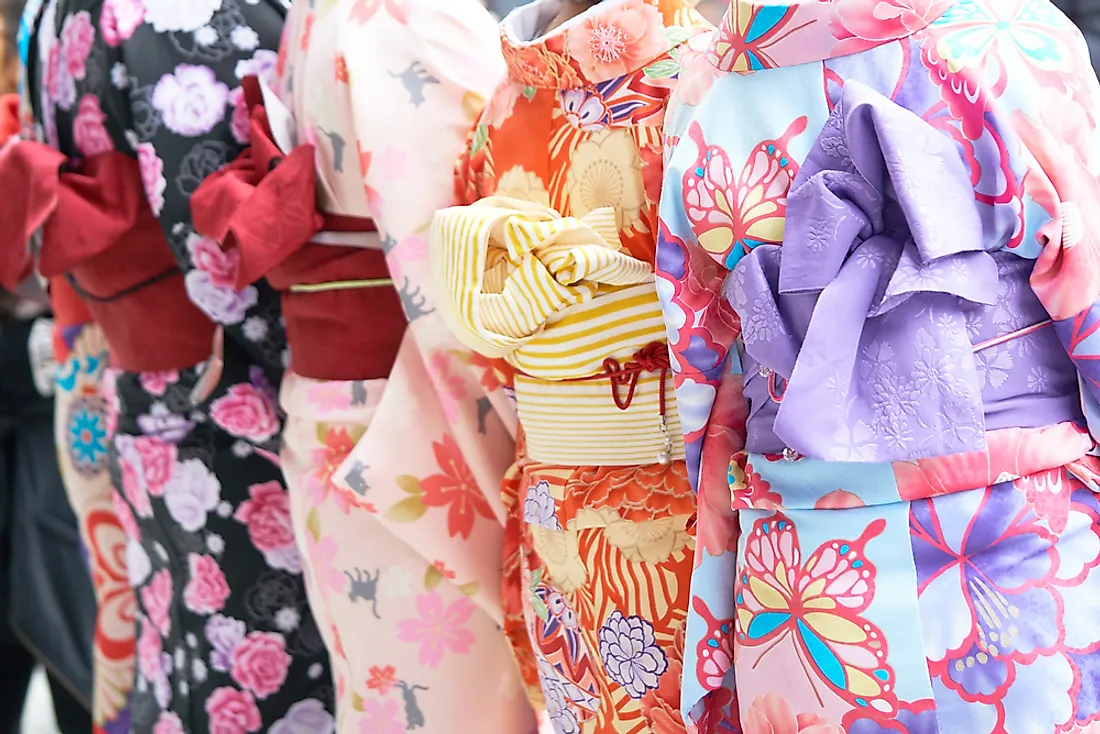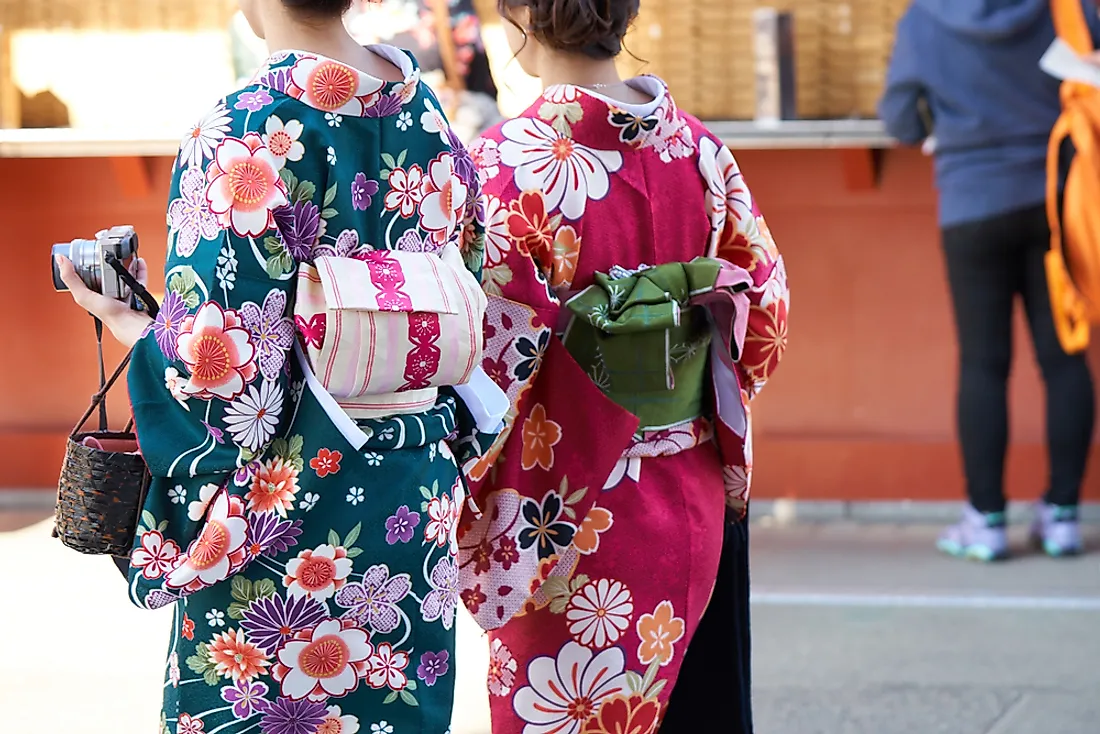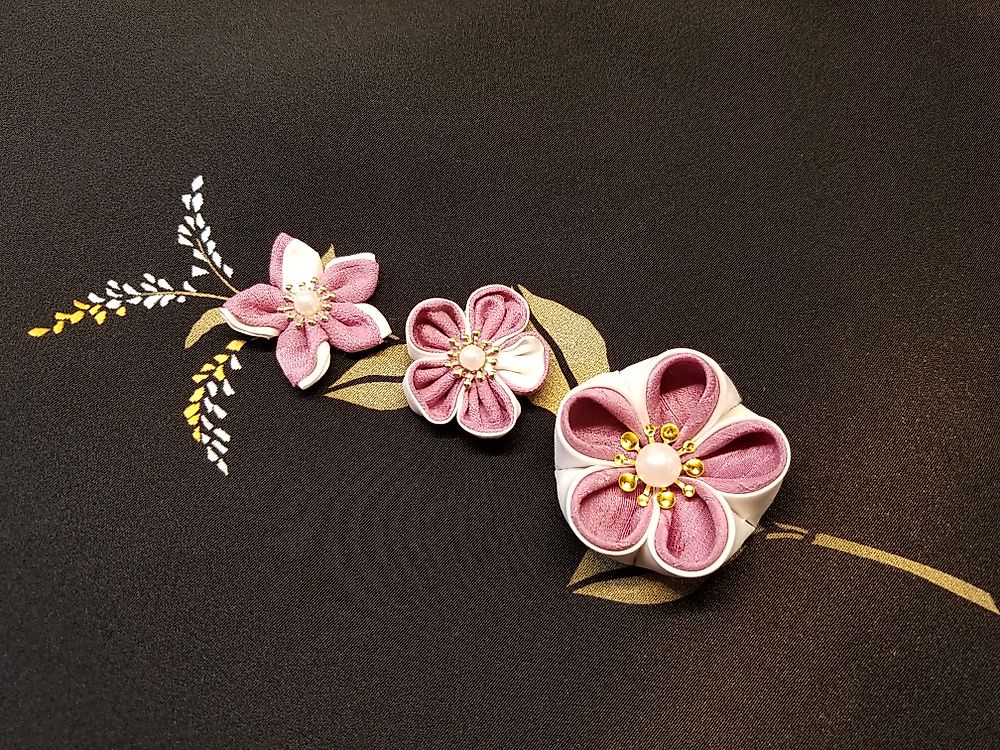Traditional Japanese Clothing

Traditional Japanese clothing is a result of thousands of years of cultural influence. Although most people in Japan wear "western" style clothing in their day to day life, there are traditional outfits that are worn for special events and remain an important part of the country's cultural heritage. The most famous of these fashions is the Kimono. However, different styles have been generated and expressed by renowned artists in Japan among them being Yohji Yamamoto, Rei Kawakubo and Issey Miyake. Their artist work has been embraced by many foreign designers. The article below describes the various Japanese traditional garments
8. Kimono

Kimono is a type of Japanese traditional wear. The name kimono can be divided into two whereby ki means to “wear” and mono means “thing or object”. According to traditions, the art of Kimono was transferred from mother to daughter. Currently the art has been introduced in schools whereby the method is similar to that of the past.
Dressing in Kimono involves a series of procedures. One has to first put on the tabi followed by an undergarment. A top and a wraparound skirt follow and then nagajuban tied by a datemaki belt is worn. Finally, the kimono is worn whereby the left side covers the right with it being tied by an obi. Traditionally, zori sandals are a must when the kimono is worn outdoors. Certain types of kimonos are worn during different seasons and occasions. Women frequently put on the kimono when attending traditional art occasions such as ikebana classes and tea ceremonies. Girls and young ladies dress in furisode which is a colorful type of kimono. Wedding occasions involve different costumes. The bride usually wears uchikake which is a white kimono with numerous stitches, while the groom dresses in black kimono. Plain black kimonos are worn by both men and women during funeral ceremonies. Certain types of kimono are correspondingly worn with seasons. During the cool months, the awase kimonos are preferred. They are made of silk, wool or synthetic fabric. During spring and summer, light cotton yukata is favored. Floral designs and vibrant colors are common during warm weather.
7. Obi
The obi refers to a band tied around the waist while wearing Japanese traditional dresses. It also functions as a Japanese martial art uniform and is part of kimono clothing. The obi for men is considerably narrow with an estimated width of 0.1 meters whereas women’s formal obi is estimated to be 0.3 m wide and 4 metres long. There are various types of obi mostly for women whereby the unmarried women enjoy the most decorated and colorful obi. The modern-day women obi is sometimes a more noticeable garment than the kimono robe. Obi are subdivided according to their material, formality, and design whereby informal obi are shorter and narrower.
6. Furisode
Furisode is a Japanese clothing that is considered the most formal type of kimono. The furisode can be easily identified by its long sleeves that range in length between 0.85 to 1.14 meters. It has short sleeves connected to the kimono body. Furisode is made using brightly colored silk that is of superior quality. Parents usually rent or buy furisode for their female children when celebrating the Coming of Age Day. Young women dress in furisode to indicate that they are legally adults and single thus ready for marriage. Furisode is also commonly worn during social occasions such wedding ceremonies of relatives or tea functions.
5. Geta
Geta is a Japanese foot wear that is basically worn with yukata. Sometimes the foot wear is matched with western clothing. Due to their extra height and impermeability, geta are sometimes worn during the rainy seasons to protect the feet from water. Geta are made in different styles. The style that is mostly known has an incomplete wooden base (dai) where the foot is set with a cloth thong (Hanao) cutting between the big and second toe. the base board is supported by two pieces of wood called ha that are light in weight. The geta was invented and worn to practically keep away kimono from touching the ground.
4. Okobo
Okobo are Japanese sandals made from wood. They are mostly made of willow wood that is of considerable height. The feet hold on to them by use of simple straps with different colors. The different colors represent the status of maiko. New maiko wear red straps while those who have almost finished apprenticeship wear yellow straps. Okobo are worn to restrain kimono from touching the earth surface hence prevent it from becoming dirty.
3. Kanzashi

Kanzashi are hair beautification ornaments used in Japanese traditional hairstyling. They are worn according to varying seasons for each month and for certain events such as New Year celebration. Kanzashi are made from a wide variety of materials such as tortoise shell, silk, gold, lacquered wood, plastic, and silver. Most of the old kanzashi have large pins that are sharpened making people believe that they were used for protection in the olden days.
2. Nemaki
Nemaki is a type of cotton kimono. They are mostly used as bath robes in resorts and spas. Mostly nemaki are either blue or white with patterns that are quite small and geometrical. Their sleeves are designed in a western style with a pocket and belt. Modern nemaki for women are florally printed while those for men retain geometrical prints.
1. Haori
Haori is a Japanese traditional jacket resembling a kimono but of thigh length. Originally it was worn by men but has currently become a renowned garment for women. The haori for women are highly stylish with Japanese textile art. A pair of ties named himo is purchased separately and used in fastening the haori. The men’s himo are mostly attached to the haori while looping is done for the women himo every time when wearing it.











